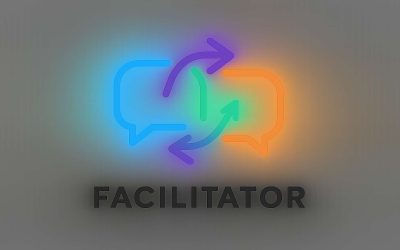
Although you may have dabbled in facilitation or consciously used it to support your design team, workshops and discussions, a deeper understanding of the practice is critical for maximizing its benefits. Whether you’re leading a group brainstorm, fostering collaboration or building consensus, effective facilitation can make or break the outcome of a meeting or workshop.
Facilitation is a process that helps people work together better, understand common objectives and plan how to achieve them, during meetings or discussions. It’s a role that requires skill, knowledge and the ability to remain neutral while acting as a guide for the group process. It also involves supporting participants through periods of turbulence and calm.
Guiding the conversation
A key part of the facilitation process is keeping discussion productive and on-topic, using skilful questions to elicit responses from all members of the group. Facilitators also know when to step in and ‘park’ topics that are important but not relevant to the current challenge at hand, as well as how to amplify quieter voices.
Dealing with individual differences
Facilitating often involves dealing with difficult and challenging people, as well as the underlying conflicts that can be present in even small groups. A good facilitator knows how to use various techniques and group processes to diffuse tension or refocus the conversation when needed, including diffusing conflict through debriefing, moving conversations to another venue, taking a break, introducing new perspectives or changing scenery.
Creating a space for psychological safety
A large part of the facilitation process is encouraging all participants to participate and providing multiple channels for participation (not always verbal). This encourages a diversity of views and ideas which ultimately leads to more robust solutions. It also means being attuned to nuances in the language and body language of the group, noticing when some members aren’t feeling safe, and knowing how to respond (for example, a simple smile or nod can do wonders).
Setting the tone
The way a facilitator conducts themselves before, during and after a session sets the tone for the entire event. They set the ground rules for the participants, introduce activities and provide clear, sequential guidance on how the session will progress. This includes making sure that the environment is appropriate for active participation, setting expectations about time and space limitations and ensuring that technology is working as expected.
Flexibility
Finally, good facilitation is flexible. A skilled facilitator understands that successful sessions often don’t follow a perfect plan and is willing to adapt to meet the needs of the group. They can read the group and change direction as necessary, and can be adept at adjusting their approach to different groups and situations.
Developing your facilitation skills can be invaluable for your day-to-day work as a designer and for your career progression. By mastering these techniques, you can lead more confidently and effectively, whether you’re leading a meeting, planning a workshop or mediating a dispute. The more comfortable you become with facilitating, the faster your design team will progress on its journey towards actionable outcomes.



0 Comments